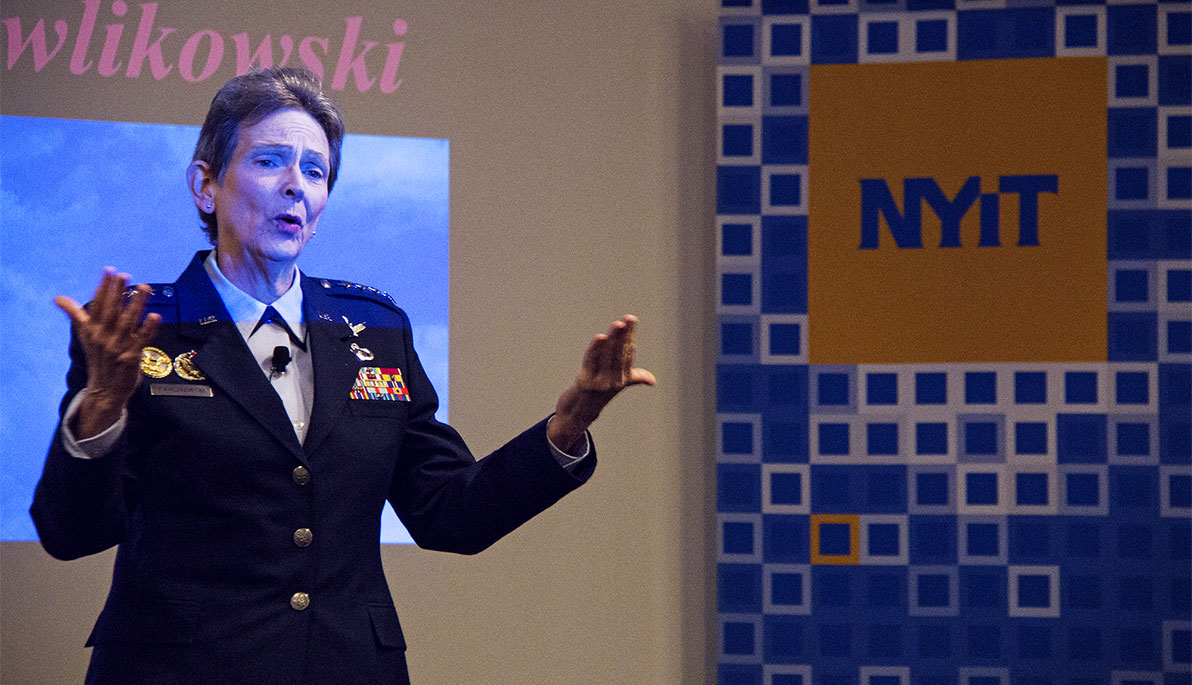News
Four-Star General Visits NYIT
November 2, 2016
In October, students and faculty members at NYIT-Manhattan attended a special presentation hosted by the School of Engineering & Computing Sciences that featured General Ellen Pawlikowski, a four-star general and nationally recognized leader in the U.S. science and technology community, talk about her remarkable career and the “Air Force of the future.”
Pawlikowski began by speaking about her background and how she worked her way up to her current role as commander, Air Force Materiel Command, at Wright-Patterson Air Force Base in Ohio. In 1978, Pawlikowski entered the Air Force through the ROTC program at the New Jersey Institute of Technology and entered active duty in 1982. Although she originally wanted to become a journalist, her father encouraged her to consider a career an engineering. Once she got past the dreaded drafting class, she fell in love with it. Her career in the Air Force has been incredibly rewarding, she said, offering her many opportunities to address a broad range of challenges. For instance, she once was assigned to design equipment that could test air samples for radiative isotopes from nuclear tests. Later, when she worked for the Pentagon, she explored the world of synthetic pharmaceuticals to produce an artificial vaccine for anthrax. She was then tasked with developing the Airborne Laser, a chemical laser mounted inside a Boeing 747.
As she moved from assignment to assignment, she managed increasingly larger interdisciplinary teams. In her current command, she oversees approximately 80,000 people and an annual budget of $60 billion. She also executes the critical mission of warfighter support by integrating cutting-edge science and technology along with world-class weapon systems management and evaluation into her projects.
She is currently working with colleagues in the Air Force on the Third Offset Strategy, which seeks to offset adversaries by leveraging technology. Through this strategy, the Air Force enable pilots to utilize everyday technology from the commercial industry (e.g., artificial intelligence, big data analytics, and biometrics). In her talk, Pawlikowski showcased examples of the technology, including a rocket nozzle created entirely by a 3D printer and a medical device that can be placed on the skin and used in the field to monitor human vital signs, such as the heartbeat, oxygen levels, and hydration levels.
General Pawlikowski’s powerful story and unexpected path to a meaningful, successful career as an engineer in the Air Force served as inspiration for NYIT’s engineering students.




